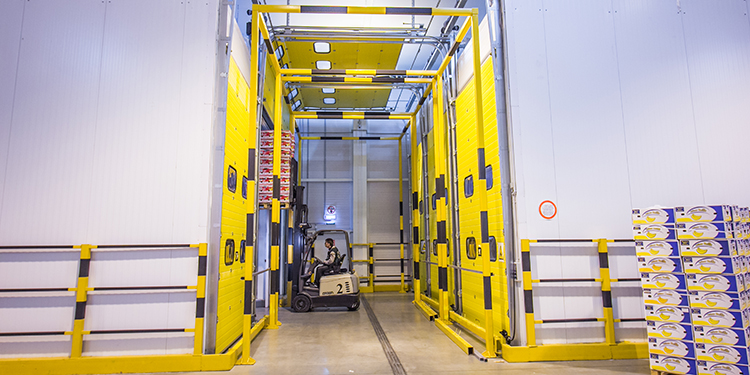How To Plan Facility Guarding That Accommodates Vehicle Traffic

With a number of today’s warehouses, distribution centers, and manufacturing facilities adding flexible, scalable load transport equipment to better meet customer demands, it’s become increasingly important to install protective guarding. Whether an operation is brand-new, greenfield construction or the reconfiguration of an existing building, planning for the appropriate protective devices that accommodate vehicles such as forklifts, automatic guided vehicles (AGVs), and autonomous mobile robots (AMRs) is crucial. Selecting and installing the right type of solution will safeguard personnel, inventory, facility structures, equipment and other assets from motorized vehicle traffic without impeding productivity.
Here are a few guidelines to help facility managers, operators, safety specialists, and owners select the optimal guarding solutions within a facility:
Personnel: When planning for fixed protective barriers such as guardrails that physically separate pedestrians from traffic hazards, first identify the areas where people are most likely to be. This includes entrances and exits, stairways, restrooms, and walkways. Best practice is to work with a qualified supplier of guardrail systems, who will help to determine the appropriate type, configuration, material, positioning, impact resistance, number and spacing of rails and posts, anchorage and more based on the protection need. When comparing guardrail options, ask prospective equipment vendors for impact testing results based on ANSI MHI31.2-2021 – Test Method for Crash Testing Industrial Guardrail Barriers and Barrier Posts, a new standard recently published by the Protective Guarding Manufacturers Association (ProGMA). The standard provides a methodology for uniform testing procedures designed to serve as a comparative benchmark for performance of industrial guardrail products, regardless of manufacturer or material composition.
Dangerous or Crucial Equipment. Power generators, electrical service panels, large motors, forklift battery changing and charging areas, vehicle refueling areas, controls for automated systems, automated systems or machinery, and other types of equipment that might create an unsafe (and potentially explosive) situation if struck by a vehicle should be protected by guardrails. For service access — such as routine maintenance or loading of material — a qualified supplier of protective devices can help to select a removable, pivoting, sliding, or lifting barrier that enables personnel or vehicles periodic access.
Elevated Work Platforms: Mezzanines, pick modules and other elevated areas where employees work often have openings in guardrails or floors to accommodate the placement of full pallets or the removal of empty pallets. These openings can be protected by a dual gate system with two interconnected protective barriers (one at the ledge opening where the pallets are placed and the other at the operator side) that open and close in tandem. This prevents a worker from entering an open area during pallet placement; conversely, it prevents a forklift or AGV from placing pallets on the ledge when workers are present. These gate systems may need to be customized or specialized to accommodate the vehicle or material width or height. Further, they can be remote controlled, or sensor triggered, enabling access without requiring personnel to push a button.
For additional guidance and recommendations on where and what type/configuration of guardrail is optimal for an application — including one with forklifts, AGVs, and AMRs — work with a qualified supplier of guardrail systems. A good place to start is with the members of the Protective Guarding Manufacturers Association (ProGMA).



